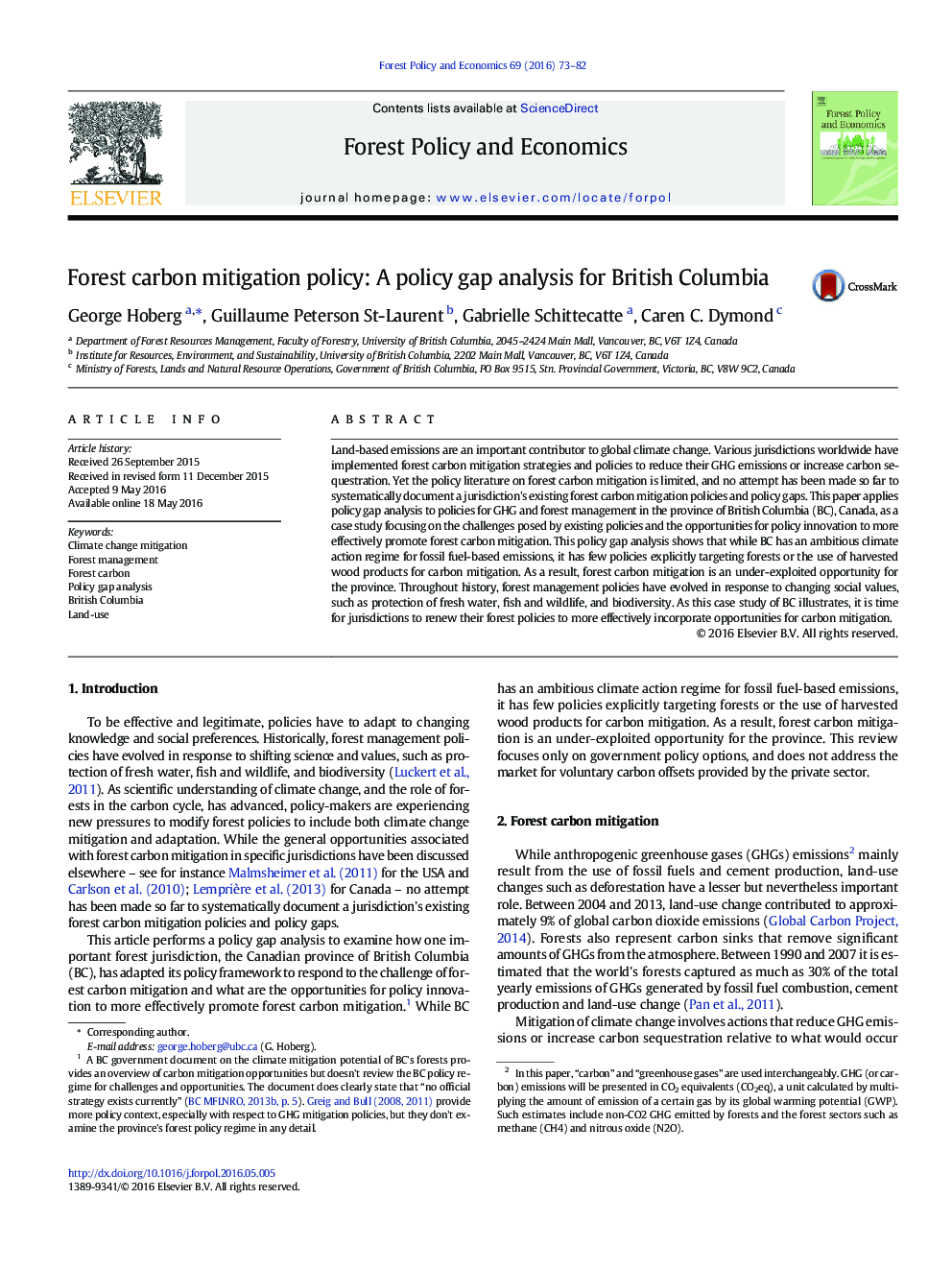| Article ID | Journal | Published Year | Pages | File Type |
|---|---|---|---|---|
| 91243 | Forest Policy and Economics | 2016 | 10 Pages |
•Climate change poses adaptation challenges and mitigation opportunities for forests.•British Columbia has ambitious climate policies but few relate to forest management.•A policy gap analysis reveals a number of opportunities to use forest policy to sequester carbon or reduce greenhouse gases emissions.•Jurisdictions should renew their forest policies to more effectively incorporate opportunities for carbon mitigation.
Land-based emissions are an important contributor to global climate change. Various jurisdictions worldwide have implemented forest carbon mitigation strategies and policies to reduce their GHG emissions or increase carbon sequestration. Yet the policy literature on forest carbon mitigation is limited, and no attempt has been made so far to systematically document a jurisdiction's existing forest carbon mitigation policies and policy gaps. This paper applies policy gap analysis to policies for GHG and forest management in the province of British Columbia (BC), Canada, as a case study focusing on the challenges posed by existing policies and the opportunities for policy innovation to more effectively promote forest carbon mitigation. This policy gap analysis shows that while BC has an ambitious climate action regime for fossil fuel-based emissions, it has few policies explicitly targeting forests or the use of harvested wood products for carbon mitigation. As a result, forest carbon mitigation is an under-exploited opportunity for the province. Throughout history, forest management policies have evolved in response to changing social values, such as protection of fresh water, fish and wildlife, and biodiversity. As this case study of BC illustrates, it is time for jurisdictions to renew their forest policies to more effectively incorporate opportunities for carbon mitigation.
